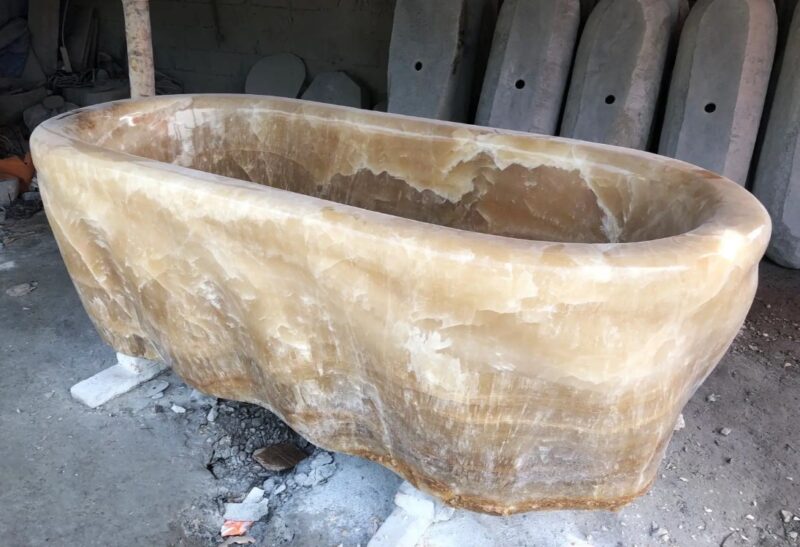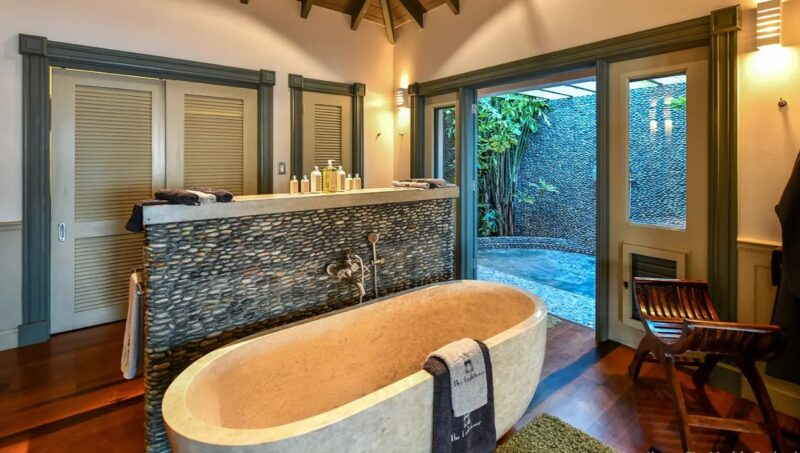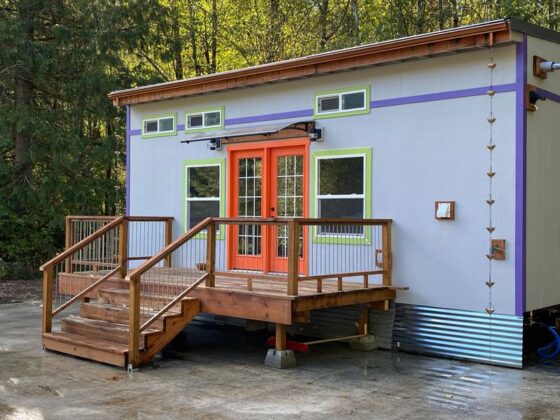Natural stone bathtubs are increasingly becoming a choice that not only embellishes a bathroom but also emphasizes beauty, uniqueness, and durability. Stone, used for centuries in interior architecture, offers not only aesthetic appeal but also practical advantages that make it a remarkable material.
The history of using stone stretches far back into antiquity. Centuries ago, people discovered its durability and utilized it in construction and interior spaces. Today, stone bathtubs continue this tradition, offering elegance and solidity that will endure many years of use.
Natural stone is not only beautiful but also pleasant to the touch. Its absorbency and natural thermal properties mean that water in such a bathtub retains its temperature for a long time, which is incredibly relaxing during baths. Stone bathtubs are tailored to the individual needs of users, available in various types of stone with different weights and textures.
As a natural material, stone finds its application beyond the bathroom space. It is valued in massages and therapies where its naturalness and weight contribute to relaxation and therapeutic benefits for the body. Its versatility and positive impact on health and well-being underscore its widespread use.
Stone Bathtubs ─ Adds Character to your Bathroom

Stone bathtubs stand out among other bathroom products not only for their durability but also for their unique appearance. Carefully chosen stone adds character to any bathroom, giving it a distinctive and luxurious look. With a variety of natural stones available, such as marble and granite, everyone can find a suitable bathtub that matches their aesthetic and functional preferences.
Natural stone is also an environmentally friendly choice. As a renewable material, it does not emit harmful chemicals into the air or water, making it safe for the environment and for the health of users. Thanks to its durability, a stone bathtub can last for many years, reducing waste generated from the disposal of traditional bathroom materials.
The impact of stone on the acoustics of the bathroom is also noteworthy. Its natural structure absorbs sound, making bathing in such a tub much quieter than in metal or ceramic products. This feature is particularly appreciated by those seeking a haven of peace and relaxation in their bathroom.
Different Styles and Personalized Design Concepts

Increasingly, interior designers and architects are moving away from traditional materials in favor of natural stone, not only for its aesthetics and durability but also for its versatility. Stone bathtubs can be easily tailored to different styles and design concepts, from modern minimalist spaces to luxurious traditional interiors. The availability of different types of stone in various colors and textures provides designers with a wide range of possibilities to create unique and personalized bathrooms.
Natural stone, used for centuries in construction and art, finds new use in the 21st century as a material for bathtubs that combine functionality and artistry. It represents not only a step towards ecology and sustainable development but also an expression of personal style and an individual approach to interior design.
Stone bathtubs are an investment in comfort, aesthetics, and durability, appealing to those who value not only transient trends but also long-term value and an ecological approach to interior design.
In conclusion, choosing a natural stone bathtub is not just about elegance and durability but also a conscious decision about functionality and ecology. It is a solution that not only meets aesthetic expectations but also ensures comfort and longevity, making the bathroom not just a place of hygiene but also a haven of peace and relaxation in harmony with nature.
This article was created in collaboration with Lux4home™, a manufacturer of stone sink and stone bathtubs in Indonesia.



